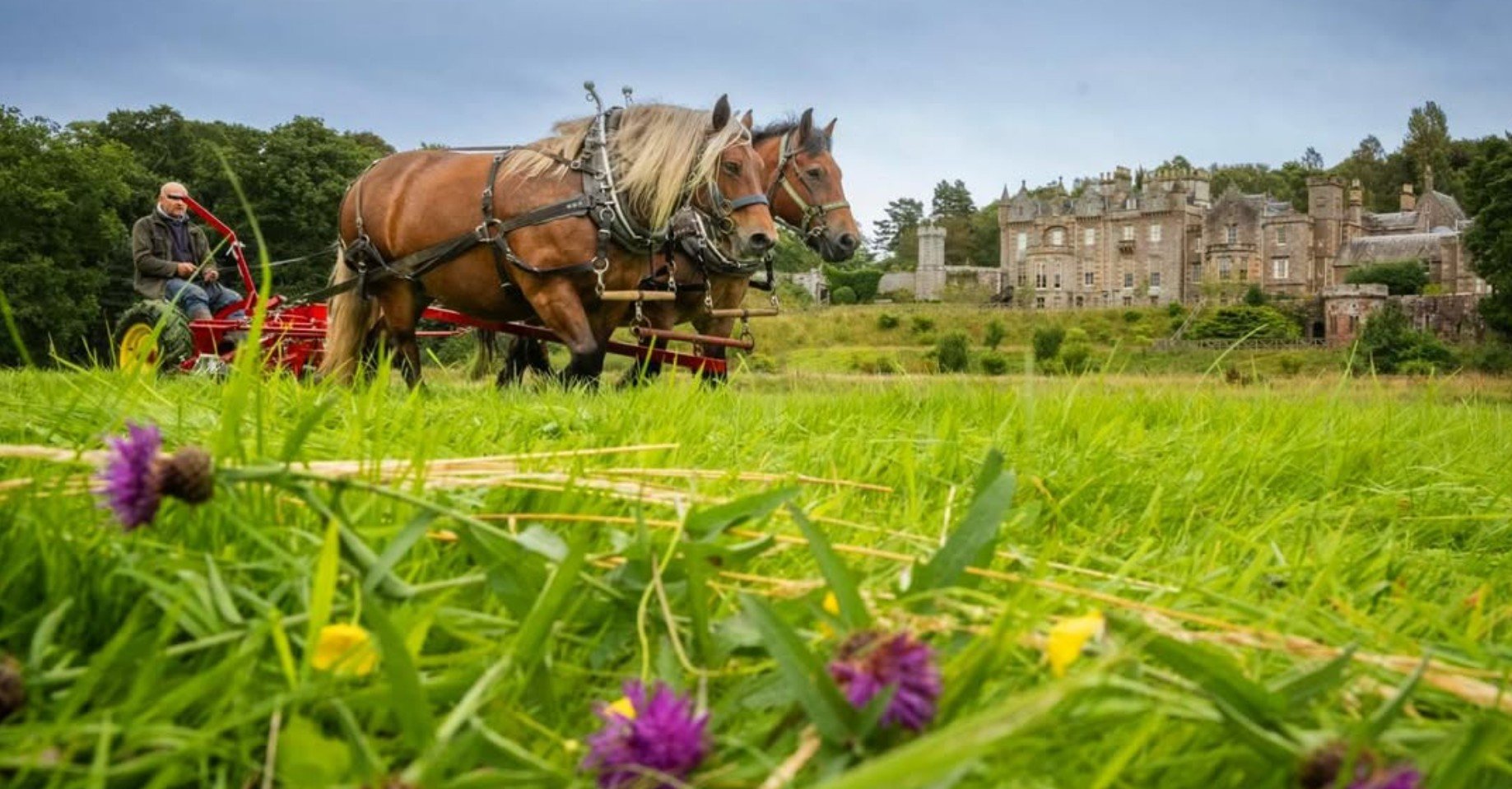Welcome to Borders Meadows Trust
Bringing wildflower meadows back to the Scottish Borders
Catriona McKay, PhD
Chances are – particularly if, like me, you are of a certain age – the phrase ‘wildflower meadow’ conjures an enchanting image of delicate, ephemeral grasses studded with jewel-like flowers rippling in the breeze. Landscapes alive with the hum of busy insects at work under a blue summer sky. From the orchid-rich chalk downlands in southeast England to the fertile, biodiverse machair of northwest Scotland, grasslands were once commonplace across the UK.
Now, the sad fact is that these glorious habitats have been all but eradicated from our landscape and our collective consciousness. The tally of statistics that catalogue this loss is both damning and terrifying. Changes in land use and management have led to the destruction of 99% of meadows across the UK in less than a century. Of the 2.4 million hectares of land managed as meadow in the 1930s only 10–20,000 hectares remain.1
Depleted though the UK is of its native woodlands, can you imagine the outcry that 99% loss in tree cover would bring? Yet the wholesale devastation of our wildflower meadows over the past 100 years has largely gone unnoticed.
Biodiversity crisis
The cost of this almost complete destruction of our species-rich and semi-natural grasslands is a catastrophic decline in biodiversity. Meadows form a critical component of a healthy landscape, supporting hundreds of specialist plants, insects, birds and fungi. But since the 1970s, we have seen significant declines in 80% of butterfly species and 63% of farmland bird species in the UK and, in the last 20 years alone, there has been a 60% decline in flying insects. Globally, as well as in the UK, the insect biomass is an essential food source for birds, amphibians, bats and other mammals and collapsing populations impact all species further up the food chain.
Humans are no exception. We rely inextricably on insect pollinators and important habitats like flower-rich grasslands, both of which are vital to a resilient food chain. According to the Intergovernmental Science-Policy Platform on Biodiversity and Ecosystem Services (IPBES), 75% of our food crops and 90% of native wild flowering plants rely on pollinating insects and animals. Species-rich grasslands support natural pest control in surrounding farmland and create healthier soils that store carbon, mitigate drought and act as natural flood defences.
Hope through action
Merlindale Nature is a non-profit Community Interest Company (CIC) founded in 2022 in an effort to respond positively and practically to the catastrophic biodiversity crisis we face in the UK.
Since its inception, Merlindale has had a particular focus on restoring and creating wildflower meadows. In 2023, we secured funding to set up the Tweed Meadows Project which allowed us, with the commitment of all the project members and the support of our wider network, to restore 75.7 hectares of meadow across 34 sites in the River Tweed catchment.
Although our initial Nature Restoration Fund grant has come to an end, we want to build on the initial success and momentum of the Tweed Meadows Project. This has led to our decision to convert Merlindale Nature CIC into a new charitable organisation, the Borders Meadows Trust.
Borders Meadows Trust
We are in the midst of a biodiversity crisis making landscape-scale restoration of our lost flower meadows critical. At Borders Meadows Trust we hope to secure further funding to expand the Tweed Meadows Project, increasing the acreage of species-rich grassland across the Scottish Borders and reversing the catastrophic declines in wildflower and pollinator populations.
By becoming a charity with a membership open to the public, we hope to build a network of volunteers, local communities and landowners, all dedicated to restoring degraded pastures back to flourishing biodiverse habitats and creating new flower-rich hay meadows where they have been lost altogether.
We want to involve as many local people as possible in meadow restoration. In addition to the annual Merlindale Nature Festival, thanks to a grant from Tweed Forum, we are planning workshops and events along the River Tweed. Open to anyone, the workshops will offer training in practical conservation activities such as meadow preparation and seed sowing, traditional scything and hay making skills, botanical surveying and pollinator identification. We are also planning storytelling and creative events, hay making demonstrations and activities with local primary school children.
Our vision
Our vision for the Borders is a place where species-rich grasslands thrive along the River Tweed and across the wider landscape, where biodiversity is restored and where local people care for the land and work together to enrich our natural world.
We are in the midst of becoming a Scottish Charitable Company Limited by Guarantee and look forward to being able to welcome new members as soon as that process is complete. Until then, you can register your interest in future membership or sign up to our mailing list. If you would like to restore grasslands, create new meadows or add an existing meadow to the map, we would love to hear from you.
(1) George Peterken, Meadows. Bloomsbury Wildlife, Bloomsbury Publishing Plc, London (2013).





